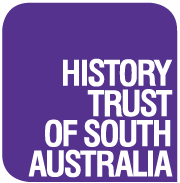The Polish Hill River Church Museum was established by the South Australian Polish community to document and commemorate the contribution of Polish migrants to the development of the State. It is dedicated to those early pioneers who first arrived in Australia in 1856 and also to the post war refugees who arrived almost a hundred years later to find a better life for themselves and their families.
The museum is housed in the original church built by the first Polish migrants to Australia in 1871. Its displays relate to the three waves of Polish settlement in South Australia. It has an interesting collection of photographs, certificates and documents, home implements and tools used by the pioneers of the 19th century. There is also a large collection of photographs, documents and artefacts relating to post World War II migration and the Solidarity migration of refugees throughout the 1980s.
One of its most recent acquisitions is a Polish Bible donated by South Australia’s premier the Hon Mike Rann. It had been presented to him by Dr Fidelus, the Prelate of St Mary’s Basilica, Krakow. Mr Rann was sworn in as Premier when the Labor government were re-elected for a third four year term on 25 March 2010. He was the first Australian Premier ever to be sworn in using a Bible in the Polish language.
The community that built the Polish Hill River Church were the first Polish migrants to this country. In August 1856, 131 Poles arrived in Australia aboard the ship August. They landed in Port Adelaide, then known as Port Misery and travelled north to Sevenhill, Penwortham, Emu Flat, Clare and Mintaro. A large group settled at Hill River and thus its name was changed to Polish Hill River. In 1869 a committee to build a church in Hill River was established. The land was donated by committee member John Nykiel, a butcher and later vigneron and one of the first Poles to buy land in the area. The Poles wished to pray and teach their children in Polish. They sent to Poland for a priest and Fr Leon Rogalski arrived in April 1870. His arrival spurred on the building program and the church named after St. Stanislaw Kostka was consecrated in November 1871. For the next 30 years, there was a thriving religious and social life around the church. The school attached to the church provided basic education: reading, writing and arithmetic, but music and the Polish language were also taught. By the late 1940s the church was little used and deconsecrated in 1950. It fell into disrepair. The church and classrooms were lovingly restored by the Polish community in the 1980s.
In 1996 a museum committee was formed with Krystyna Luzny as curator and Krystyna Andecki chairperson. With the assistance of the Polish Pioneer Descendants’ Group Inc. and a lot of financial help from the Polish community and some government grants, the museum was set up. By 1999 it was opening regularly to the public.
Interpretive panels telling the story of the Polish community in the area, funded by the History Trust in recent years, are displayed in the museum alongside the collection.

